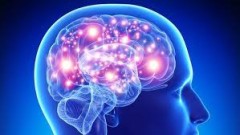Risk and Reward in Alzheimer's Disease Research: Dr. David Teplow
Summer 2019

When I began my studies of Alzheimer's disease (AD) almost 30 years ago, I had the great fortune of knowing nothing about the disease.
This gave me an advantage over those already working in the field because I started ``outside the box'' of current thoughts, presuppositions, biases, and assumptions about the disease. At that time, the prevailing hypothesis was that AD is caused by small strands (fibrils) of the amyloid β-protein (Aβ protein). These formed deposits in the brain. I hypothesized that designing therapies that targeted these deposits already in the brain would accomplish little, as these were late stages of Alzheimer’s disease and massive neuronal loss in the brain's memory areas already had occurred. I built my young lab around the idea that we should instead target the early stages in which the fibrils form. I set out to discover if such precursors existed, and if so, how they might be involved in disease.
This posed substantial risks, both from scientific uncertainty (my hypothesis could prove wrong) and from the practical need to convince scientists, especially those who sat on the scientific advisory boards that determined whether I could get funding for the work, that this novel hypothesis had merit. I did indeed have trouble funding the initial stages of the work, but this changed in 1997 when my laboratory discovered a fibril precursor that we termed the "protofibril" (a combination of the Greek word proto [``first"] with fibril). Our finding that protofibrils were toxic—they killed neurons grown in the laboratory—was especially important because it could explain why neurons died in AD. This prediction later was confirmed when a protofibrillar form of AD, a form of the abnormal proteins that appears before these protein start to really stick together, was found in a Swedish family.
What may be the most satisfying and rewarding process in scientific research is that of formulating a new hypothesis, predicting as yet undiscovered consequences of the hypothesis, and then finding that the predictions come to pass. I was fortunate to experience this in the work I described here. In 1992, Hardy and Higgins had proposed the ``amyloid cascade hypothesis,'' which placed fibrils at the center of a pathogenic process (cascade) that caused AD. Two decades later, thinking outside the box, and taking a risk in starting a new lab, led to our proposition of the ``oligomer cascade hypothesis,'' which posits that the seminal pathologic agents in AD are Aβ oligomers, not fibrils. This new hypothesis now has supplanted the older one and currently is being tested in human clinical trials in which AD patients are being treated with oligomer-specific agents.
Dr. David Teplow is a Professor in Residence in the Department of Neurology, a member of the Molecular Biology Institute and the Brain Research Institute, and Director of the Biopolymer Laboratory at UCLA.